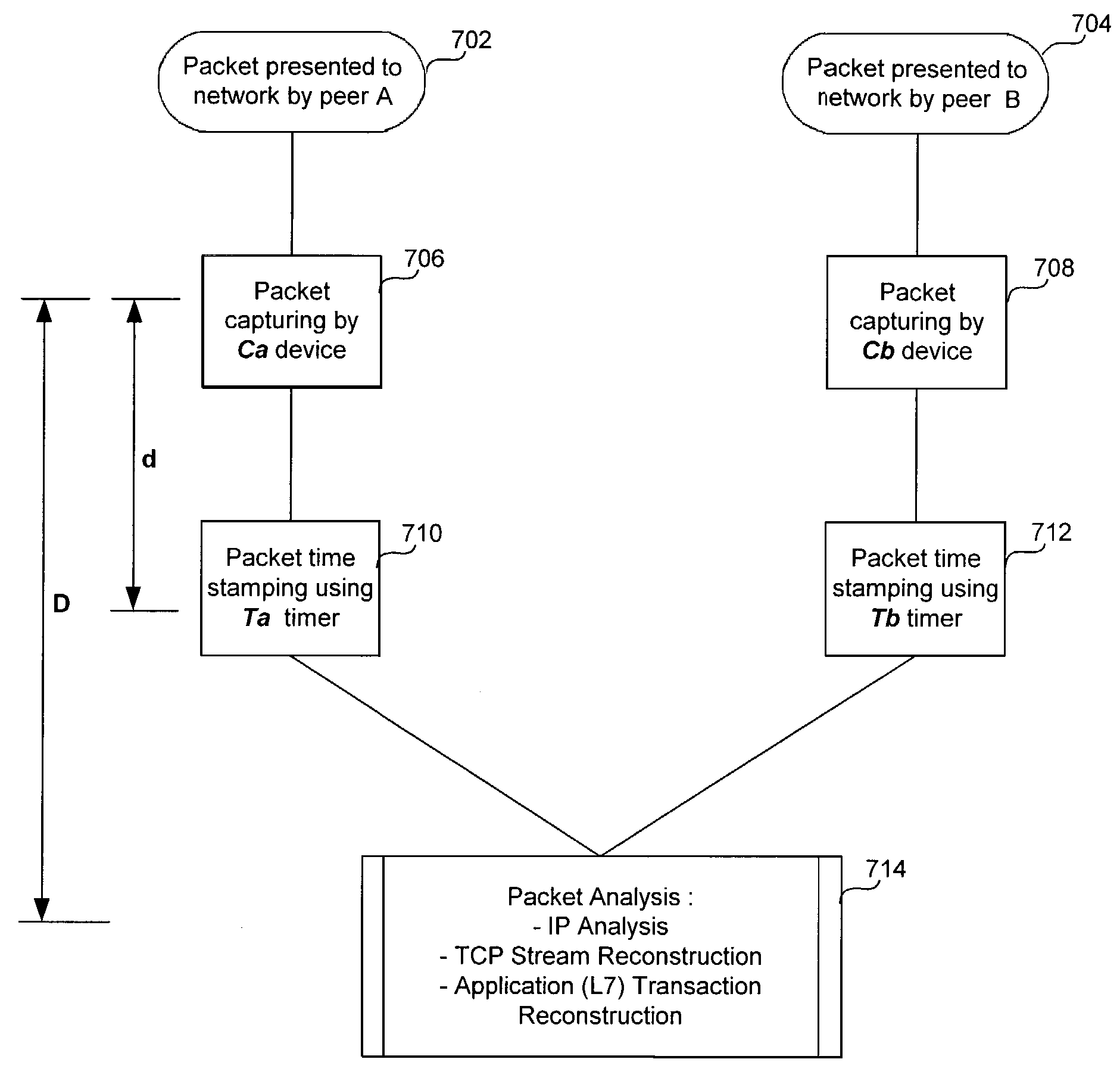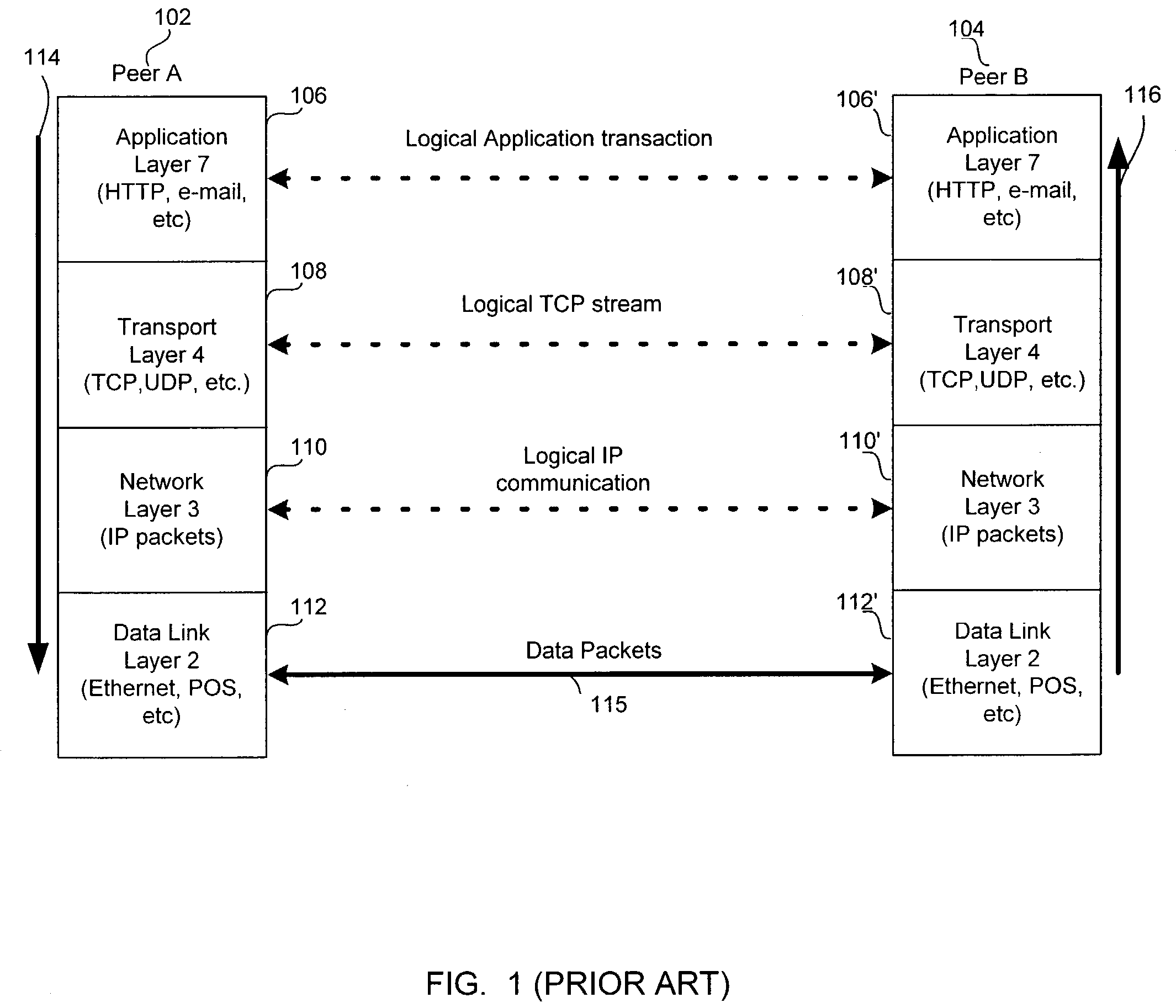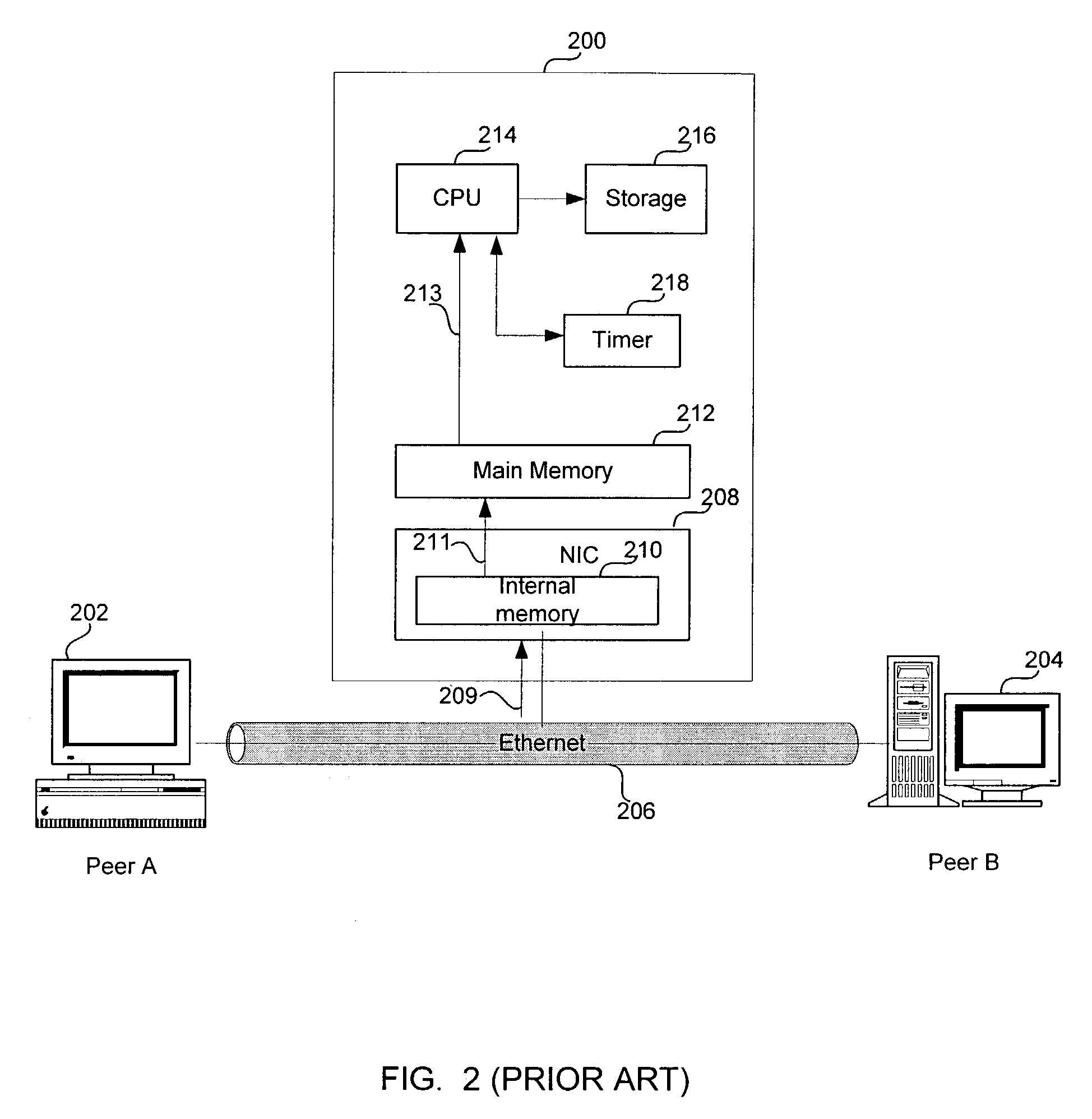Method and system for transport protocol reconstruction and timer synchronization for non-intrusive capturing and analysis of packets on a high-speed distributed network
a high-speed distributed network and packet-reconstruction technology, applied in data switching networks, frequency-division multiplexes, instruments, etc., can solve the problem that the buffering effect cannot be eliminated completely, and still does not eliminate the packet-reordering problem altogether, so as to achieve less likelihood and higher efficiency
- Summary
- Abstract
- Description
- Claims
- Application Information
AI Technical Summary
Benefits of technology
Problems solved by technology
Method used
Image
Examples
Embodiment Construction
[0046]The embodiments of the present invention will be described below with reference to the accompanying drawings. Where possible, like reference numerals are used for like elements in the accompanying drawings. For convenience of explanation, the following description is directed to TCP (Transport Control Protocol) as a specific implementation of the general reliable transport protocol (layer 4 protocol). However, one skilled in the art would recognize that the present invention is compatible other reliable transport protocol implementations, such as a WAP (Wireless Access Protocol), SCTP (Stream Control Transmission Protocol), and the like.
[0047]FIG. 7A is a functional flow diagram illustrating the packet capturing and analysis system according to one embodiment of the present invention. For the purpose of explaining the operation of the packet capturing and analysis system of the present invention, it is assumed that two Internet Protocol (IP) peers A and B (not shown) are conne...
PUM
 Login to View More
Login to View More Abstract
Description
Claims
Application Information
 Login to View More
Login to View More - R&D
- Intellectual Property
- Life Sciences
- Materials
- Tech Scout
- Unparalleled Data Quality
- Higher Quality Content
- 60% Fewer Hallucinations
Browse by: Latest US Patents, China's latest patents, Technical Efficacy Thesaurus, Application Domain, Technology Topic, Popular Technical Reports.
© 2025 PatSnap. All rights reserved.Legal|Privacy policy|Modern Slavery Act Transparency Statement|Sitemap|About US| Contact US: help@patsnap.com



